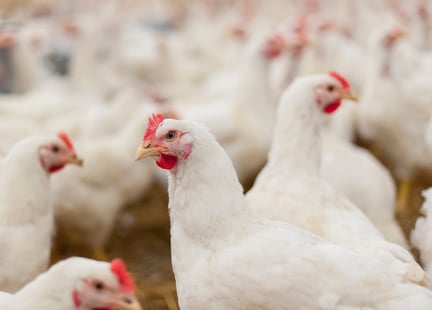The unique pressures on global food supply chains over the past 18 months are well documented.
The unique pressures on global food supply chains over the past 18 months are well documented. War in Ukraine has caused major disruption, in many regions labour shortages continue as the world adjusts to life after the pandemic and the cost of production, particularly for energy intensive products, has rocketed.
Despite all these challenges, there has been no let-up in consumer expectations and brands are striving to meet those needs. Online content and the reach of social media networks has made food production more visible to everyone, while major shifts in diet, most notably towards plant-based, magnify scrutiny still further. Quality and safety are a given, but alongside these factors, animal welfare, sustainability of supply and socially conscious production methods are rising ever higher on the agenda.
The implication for primary producers is clear, according to LRQA’s Technical Account Manager for Agriculture, James Sage: “We’re seeing an acceleration of a trend set in motion by the horsemeat scandal ten years ago,” says James. “Audit regimes are multi-faceted, more robust and reaching ever deeper into the supply chain, so that in many markets, programmes covering primary producers are now the industry norm.”
All the evidence points towards this being a longer-term shift. As 2030 draws closer and net zero commitments start to bite, the focus for retailers and manufacturers is shifting from owned operations to supply chains, to ensure carbon emissions targets are understood and being met.
“The market is demanding more,” James explains. “Brands are making high profile, visible commitments and are looking to evolve both their own assurance schemes, and existing standards, to ensure targets are met and brand reputation is protected.”
“Clients are asking us to help monitor and manage a much wider range of ESG programs, from carbon capture, regenerative agriculture and soil improvement initiatives to worker welfare. On top of this, regulatory requirements are intensifying, particularly in politically sensitive areas such as responsible water usage, plastics and waste management.”
Some of the macro-pressures being felt by producers may ease over time, but ultimately, making sourcing more visible, products more traceable and supply chains more transparent is becoming an intrinsic part of what a brand offers the consumer.
James sums up the situation for primary producers: “Hyper transparency is already happening, both in the retail environment and on-pack with many producers becoming marketers themselves – they know the value of being seen to produce responsibly. The decision is simple – do you want to be ahead of that curve, or left behind?”






